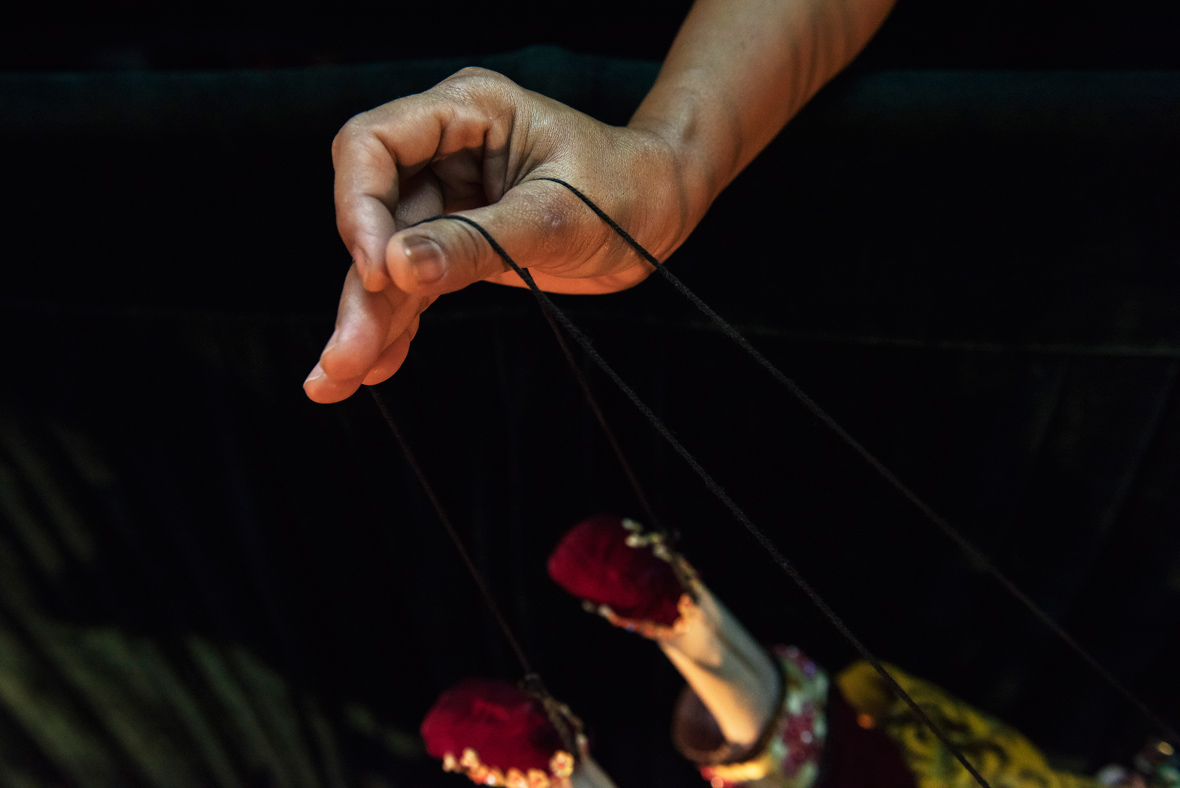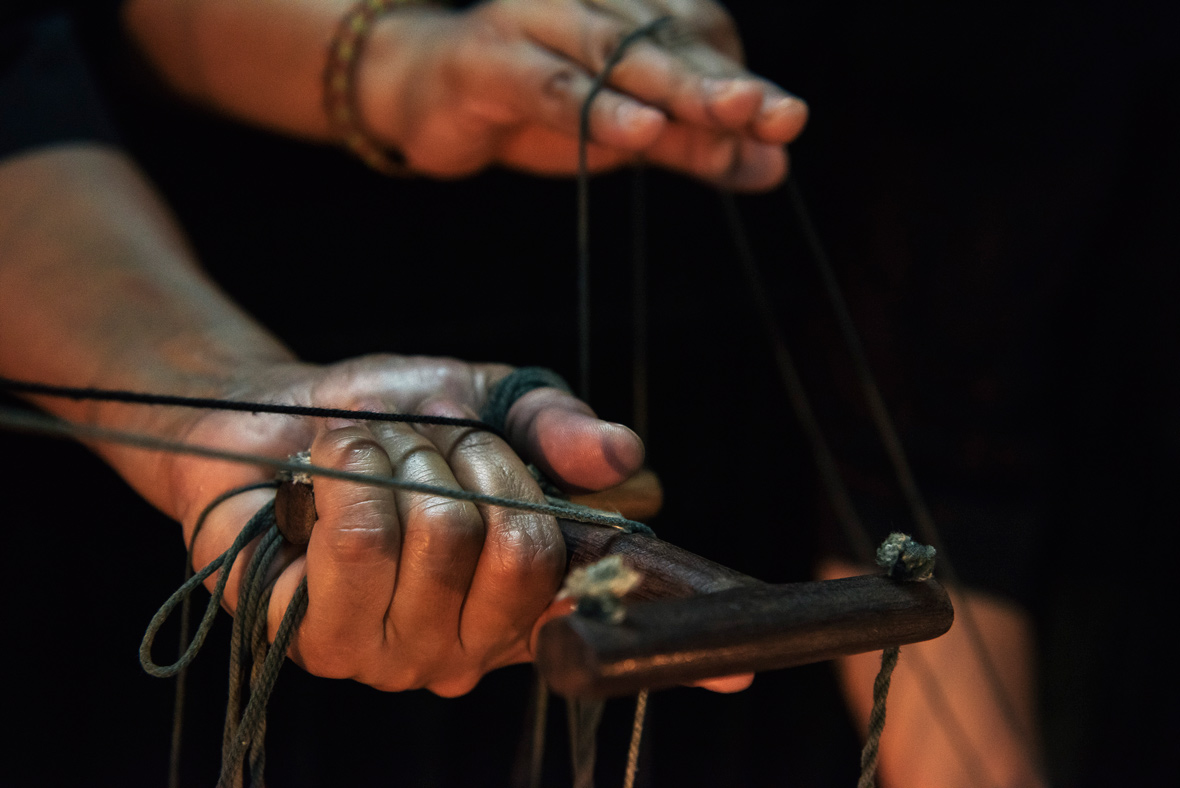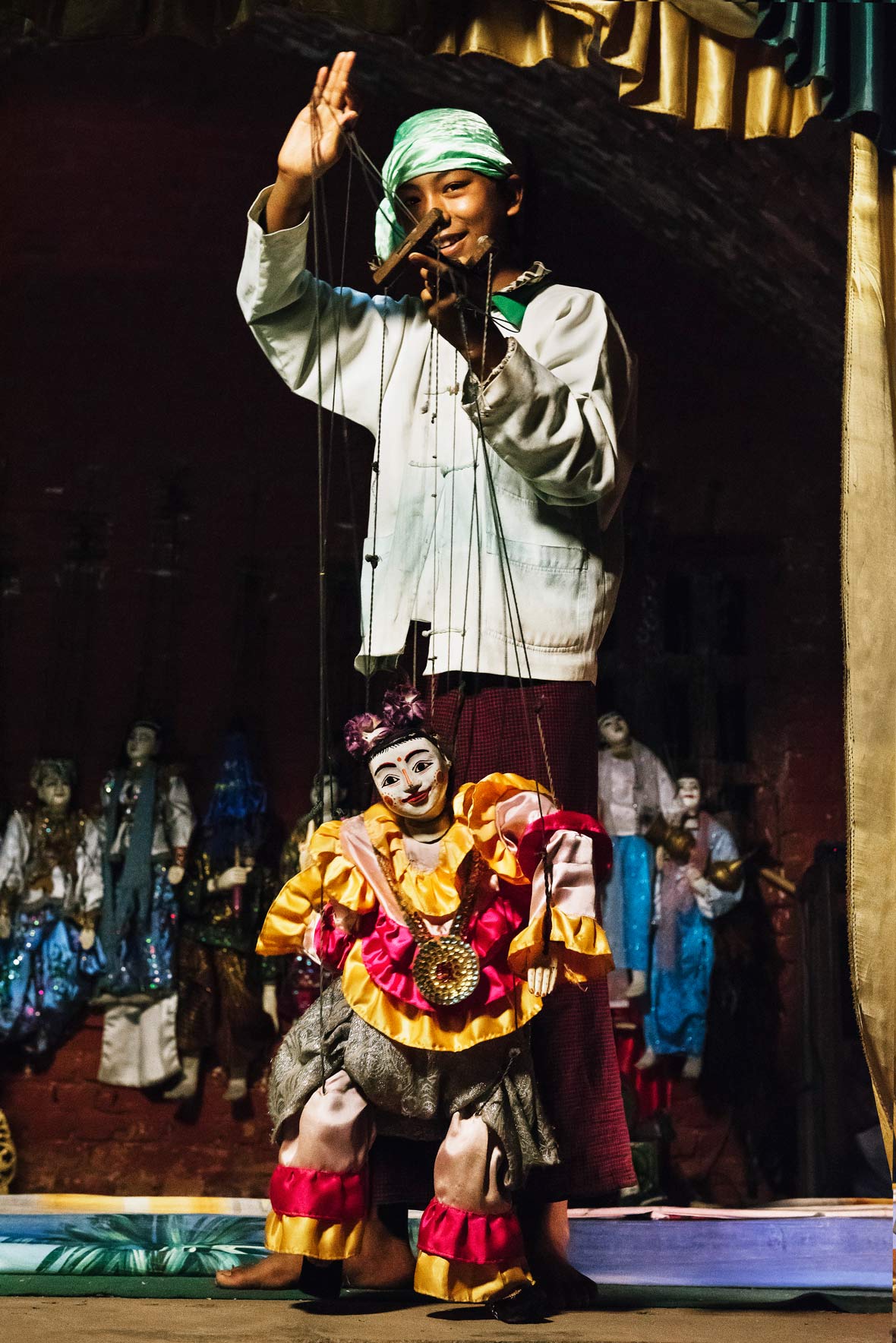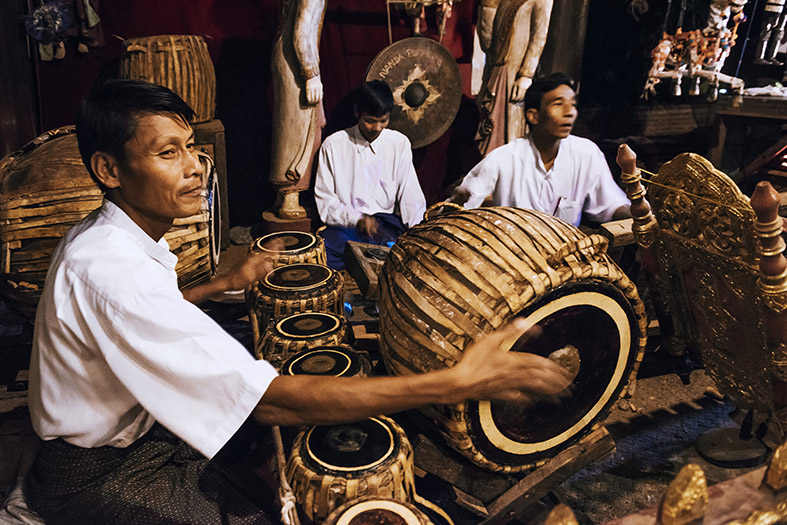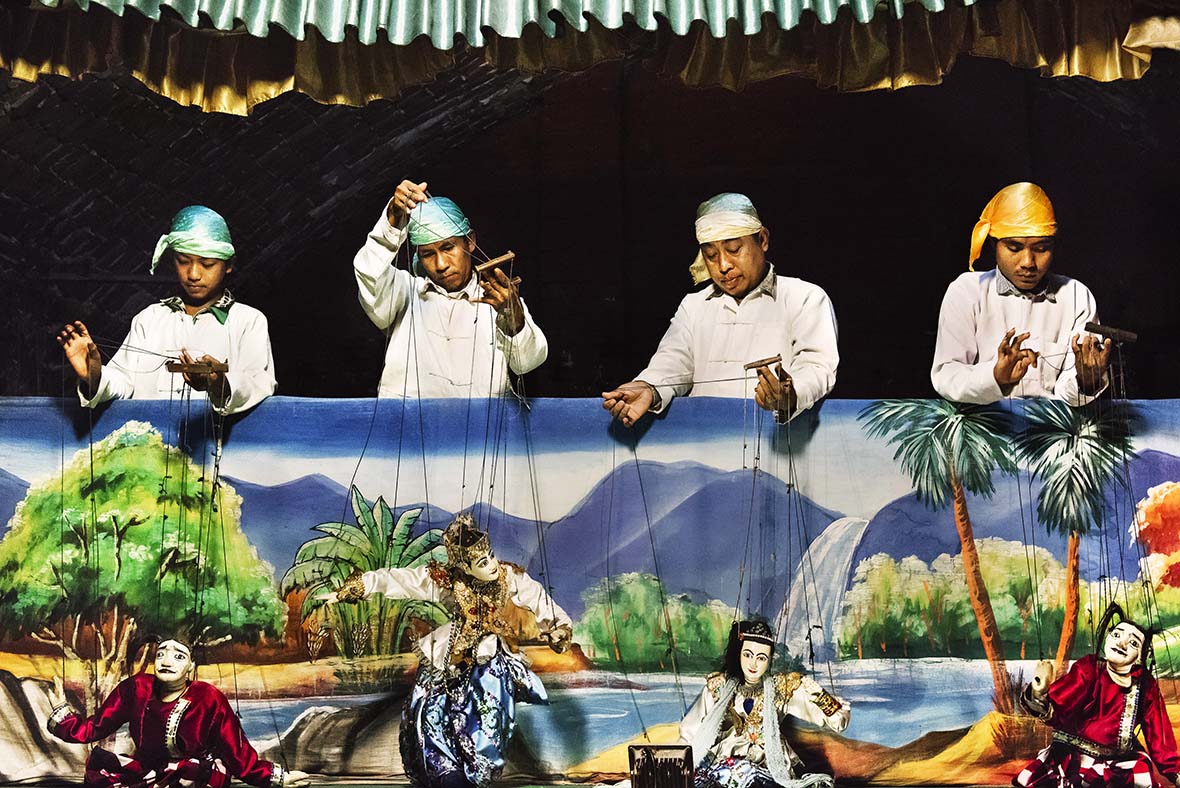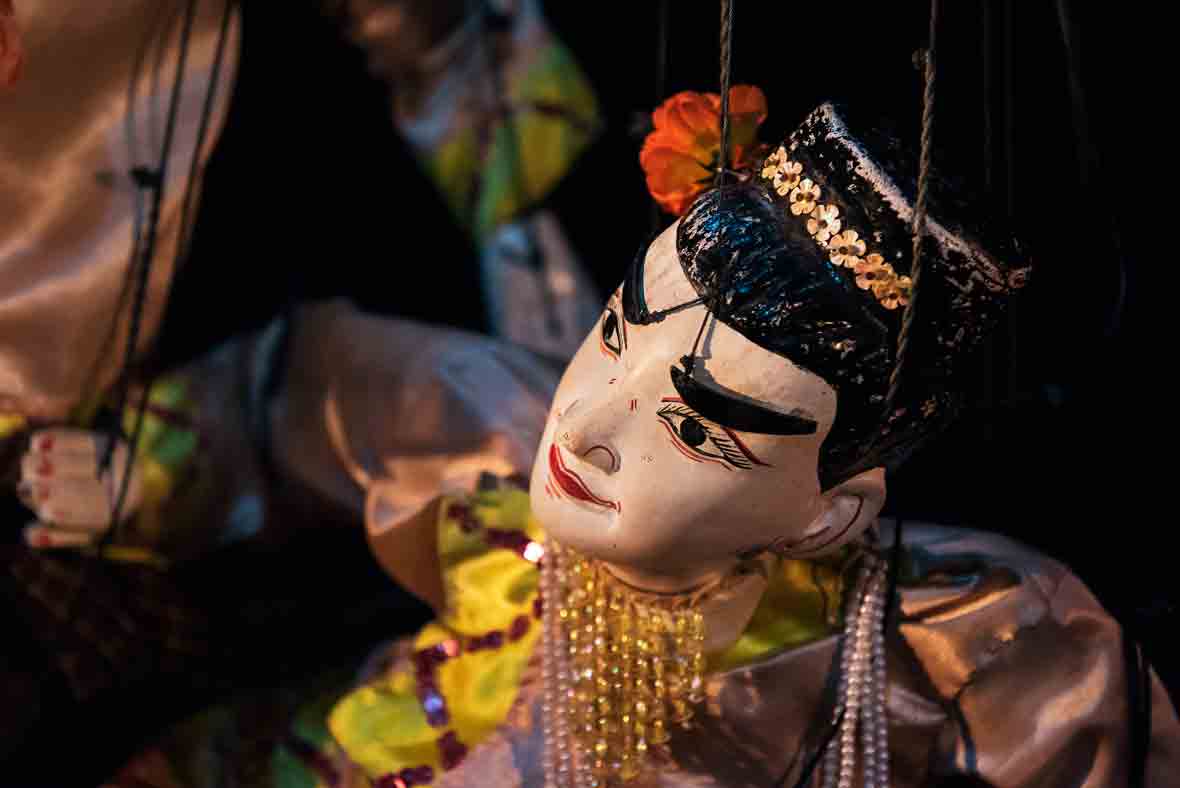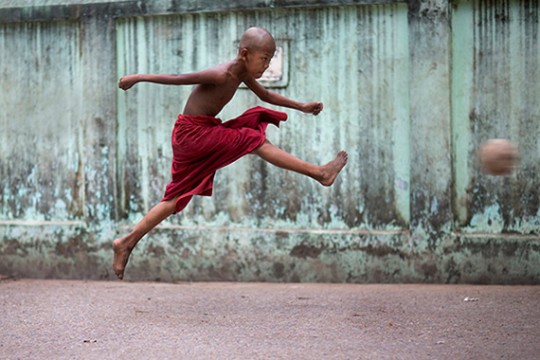无法观看?前往优酷
“Some say that the culture behind traditional Burmese puppets has been around for thousands of years, perhaps since the 11th century, but I’m not certain.” says Mr. Khin Maung Htwe, owner of the Htwe Oo Myanmar Puppetry Home. “Although I’m sure that it originated from over 600 years of ancient culture; we have discovered that wooden puppets were a major form of entertainment for Burmese royals ever since the 15th century. During the period of colonialism, this art migrated along the Irrawaddy River, before settling amongst the local community.”
“有人说缅甸木偶文化自11世纪起,已有上千年的历史。我不确定这个一千年的说法,但我肯定它是已超过六百年的古老文化,在15世纪,它是专门作为皇家贵族的娱乐。后来在殖民期间,木偶文化沿着伊洛瓦底江迁徙,最后在三角洲地区安顿下来…… ” Khin Maung Htwe先生娓娓道来,他是位于仰光Htwe Oo Myanmar Puppetry Home的木偶剧团负责人。
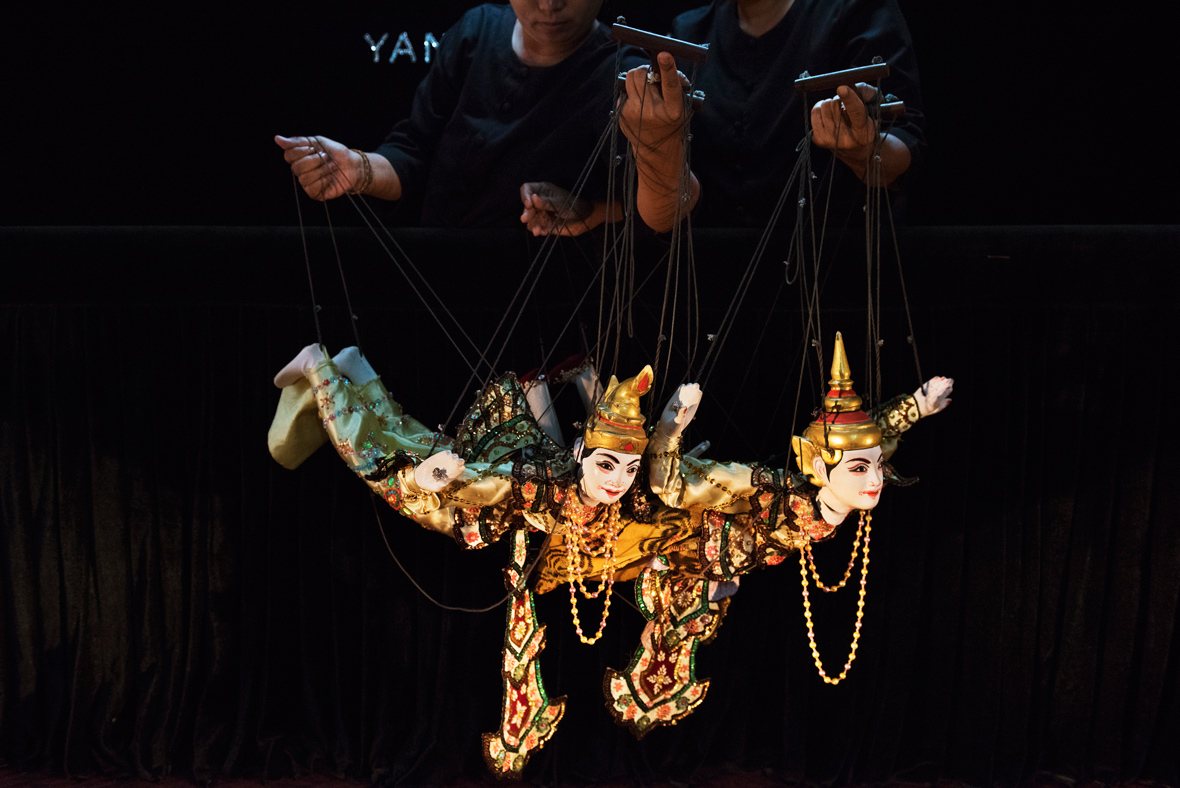
As with the rest of the world, cultures and old traditions are slowly fading into the background within contemporary Myanmar. However, Khin Maung Htwe remains adamant in upholding this piece of Burmese heritage, by performing alongside his family-run puppet troupe at Htwee Oo Myanmar Puppetry Home. Each puppeteer, which includes Khin Maung Htwe’s own wife and daughter, uses all ten fingers to intricately animate wooden marionettes with every pull, twist, swing, whirl and shake. There are 28 main characters in traditional Burmese puppet shows, ranging from gods, animals, monsters and royals. Traditional Burmese puppets are carved, polished, sanded and painted, before they are dressed in hand-stitched costumes; the entire process requires around twenty days of production from start to finish. Strings are also attached to every joint, including the puppet’s eyebrows in order to allow for more flexibility during each performance.
与世界各地一样,缅甸的传统文化也面临着改变和消失,但仍然有像Khin Maung Htwe先生这样热爱木偶文化的人坚持将其传承。Htwe Oo Myanmar Puppetry Home是半家族式的剧团,Khin Maung Htwe先生的女儿与太太也是木偶表演者。传统的木偶角色有神、动物、妖怪和帝王将相等28种。木偶戏剧表演艺人通过十个指头,让这些本来无魂的木偶,通过线牵艺人巧妙的运用提、拔、勾、挑、扭、抡、闪、摇等技巧,顿时有了生命一般。做到如此这般,也得益于缅甸木偶复杂精细的制作工艺。一个木偶的制作周期通常为20天,需要经过四、五道程序。从雕刻、加工、刨光,到贴金、上漆、打磨、上色、修整,从头部到身体各处13个关节,再逐一用线将上肢、下肢、腰部、颈部、手掌、甚至眉毛等串起来……此外,木偶身上的服装也都由手工艺人一针一线缝制。这样,一个木偶才拥有了神灵具备的可能性。
Unlike most performing arts, language barriers don’t exist and do not hinder the audience’s enjoyment and connection with the puppet show, and in turn, this has preserved the art form for centuries. Previously, it was even possible for a single puppeteer to control 60 strings at one time; however, this is a skill that has been lost over the years. Modern-day puppeteers usually learn to control at least 12 puppet strings.
木偶戏没有语言的沟通障碍,它生动的肢体表演也是可以流传几百年的原因。据说木偶艺人最多可以同时操控60根线,但这种技能已经失传。而现在的木偶艺人至少也要学会控制12根线,才能让木偶活灵活现起来。
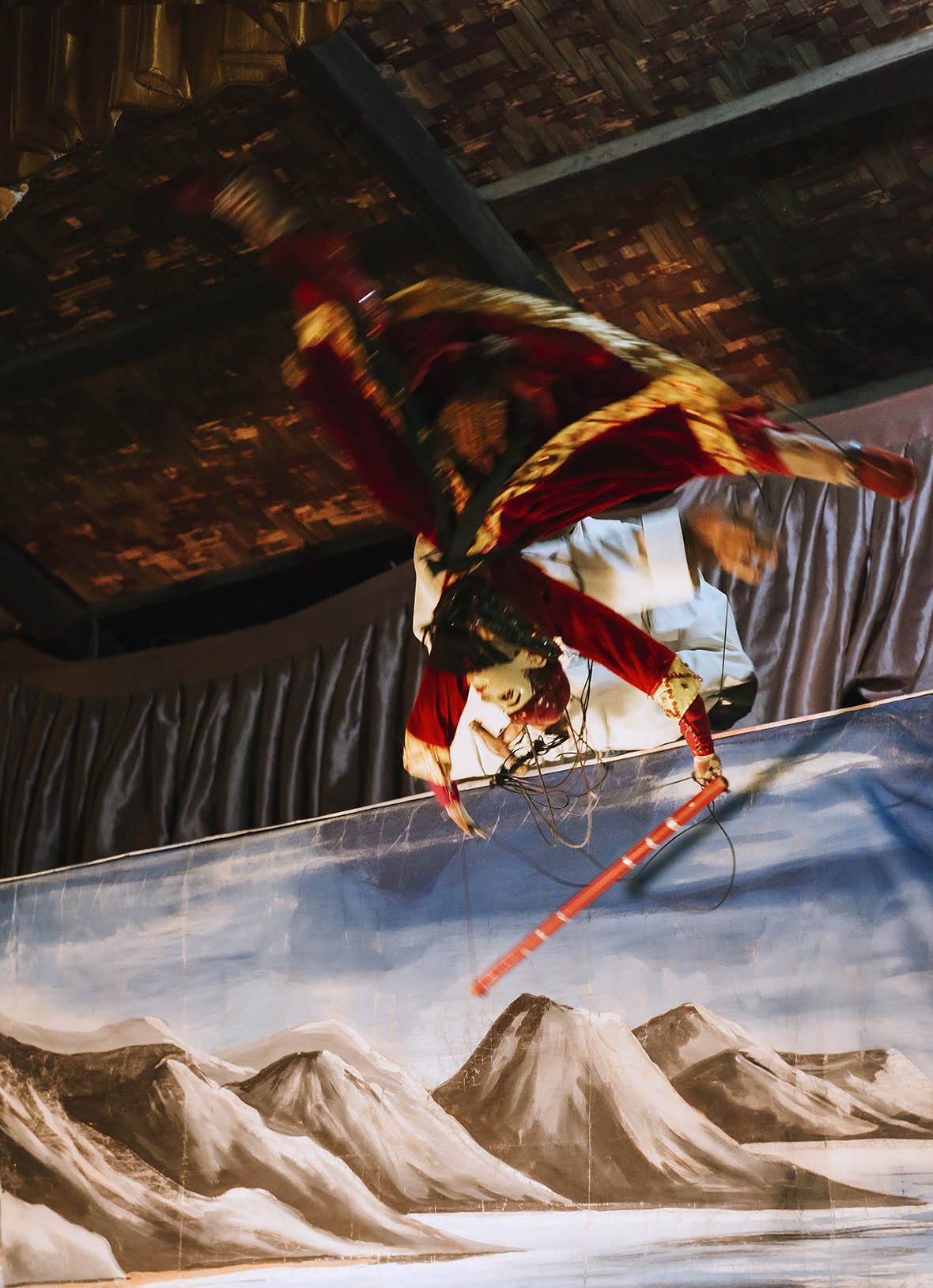
Despite the increasing rarity of traditional Burmese puppetry, there are still some prominent figures within the community who are determined to keep the art form alive. We also encountered a puppet theatre group at Nanda Restaurant in Bagan, whose elderly leader was proudly passing down the art form to his grandchildren. He describes traditional Burmese puppetry as being like a performance from the soul, which is evident as he seamlessly guides and controls his puppets across the stage with both eyes completely transfixed. Building up to the climax, the veteran puppeteer twists the puppet in a 360 degree spin before catching the puppet on his shoulders, all in one continuous motion. Deeply focused on his craft, he has the expression of someone who is simply full of dedication and reverence for this ancient art form.
这传统文化虽日趋衰落,但在缅甸各地仍有坚守的艺人。同样在蒲甘Nanda餐厅里,我们也遇到了一班木偶剧团,其中一位最长者将这门艺术骄傲地传给了自己的孙辈。这是一种通过心灵来表演的艺术,那位年长的艺人不断变动手中的架子,目光完全倾注于木偶身上。随着剧情进入高潮,他也从挪着小碎步一路平移,到360度连番转身,最后将木偶稳稳落于自己肩头,整个动作一气呵成。这无不体现着艺者的精湛技艺,而他的眼神始终透着对这门古老艺术的执着与敬仰。
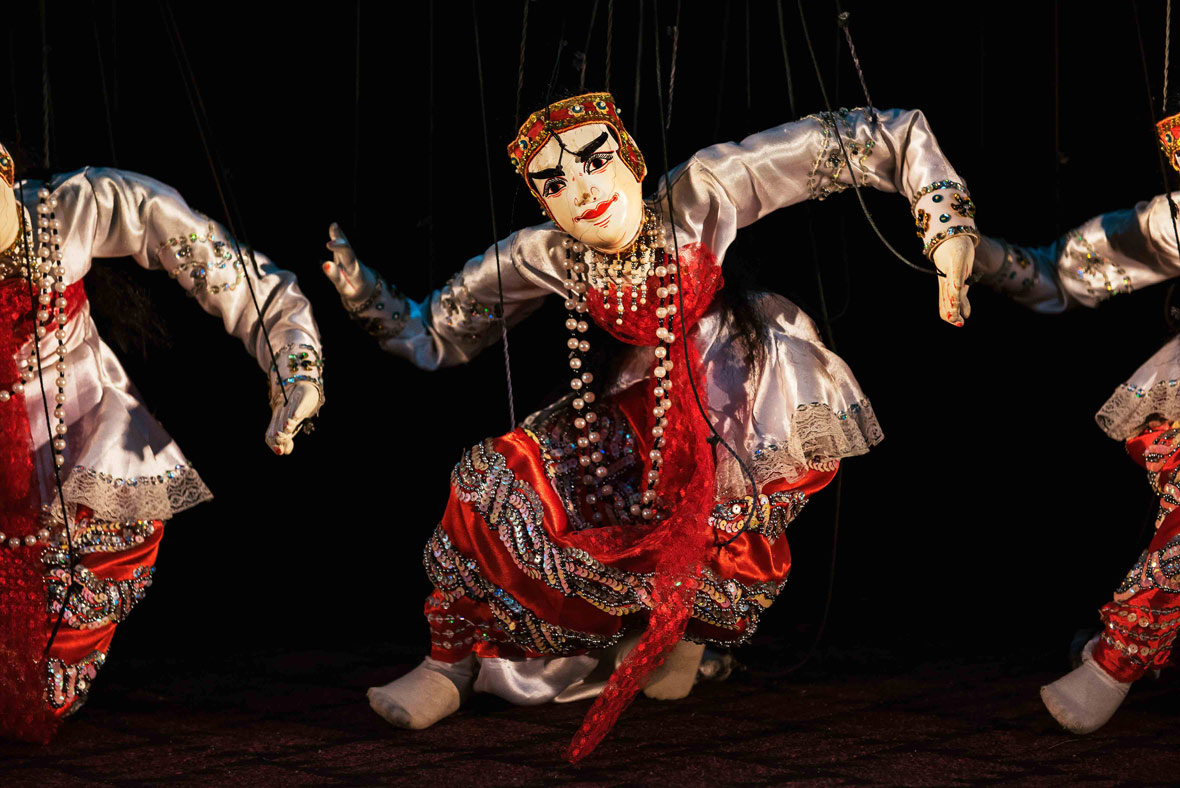
With every passing scene, the puppeteers bring each character’s personality to stage. Storylines are derived from a variety of plot lines that range from ancient myths and legends, infused with a great deal of humor, folklore and everyday life. Singing artists further bring these expressionless puppets to life; their vocals give personality to the characters and heighten the atmosphere, creating a more unified and enchanting performance.
随着一节节肢体被注入生命,在提线的牵引下,整具木偶陡然间具有了灵性。传统木偶戏的内容多以动作性、故事性取胜的古代神话传说为主;到后来,随着木偶形象的日趋鲜活日常,情节开始渗入民间的风趣诙谐。木偶戏的演出格外注重声形合一,这些没有表情的木偶,其喜怒哀乐都只有通过艺人的演唱来表达,再以配乐作为场景气氛烘托。
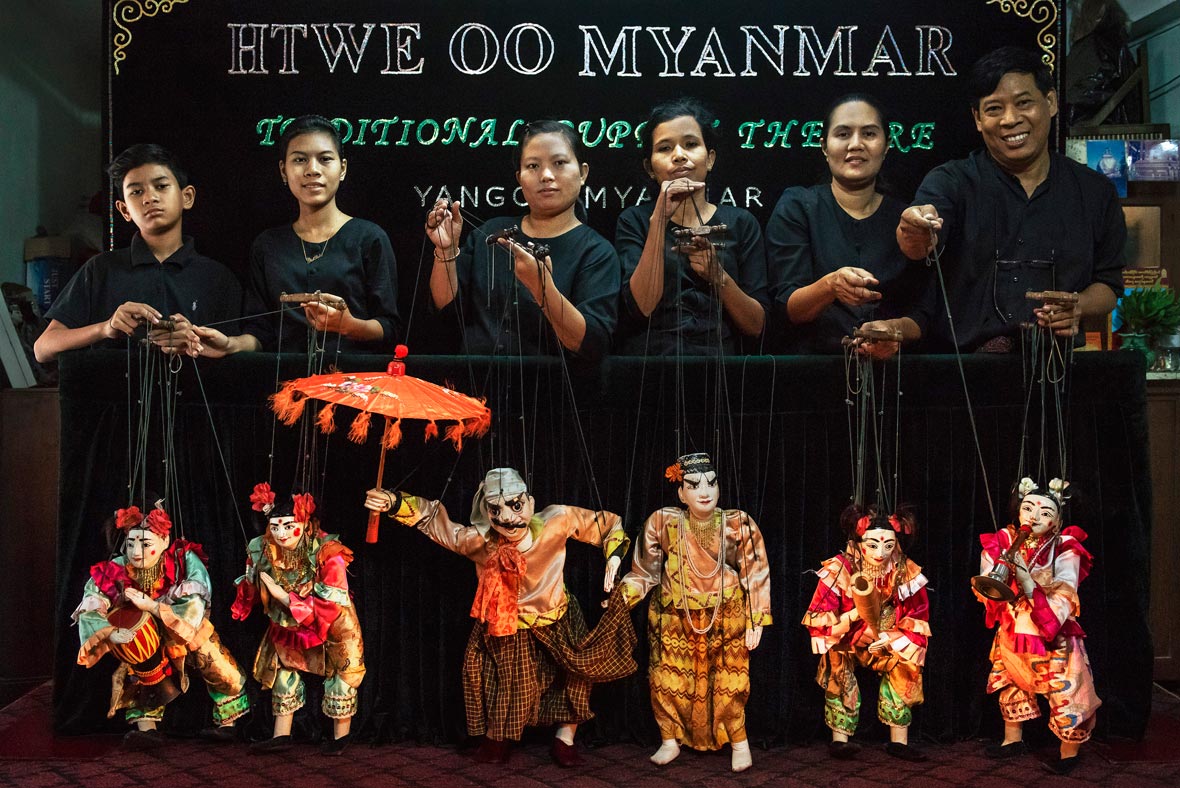
While there are now no more than a dozen independent puppeteer groups left in Myanmar, it remains highly regarded as a unique art form that is heavily steeped in the country’s rich, traditional culture.
现在的缅甸,可以独立进行木偶表演的老艺人,只有十多个了。木偶戏不再仅仅是娱乐,它也是以更高的艺术形式在表现缅甸的整个传统历史文化。
Website: htweoomyanmar.com
Facebook: ~/htweoomyanmarpuppetryhome
Contributor & Photographer: Chan Qu
Videographers: Chan Qu, Leon Yan

